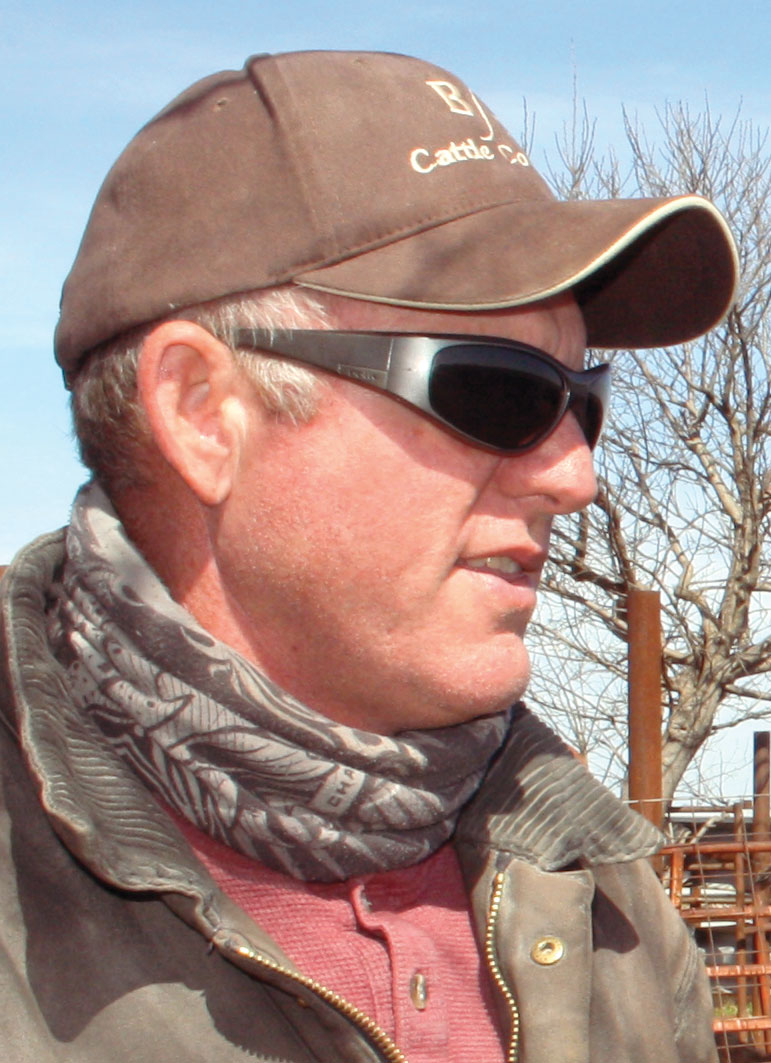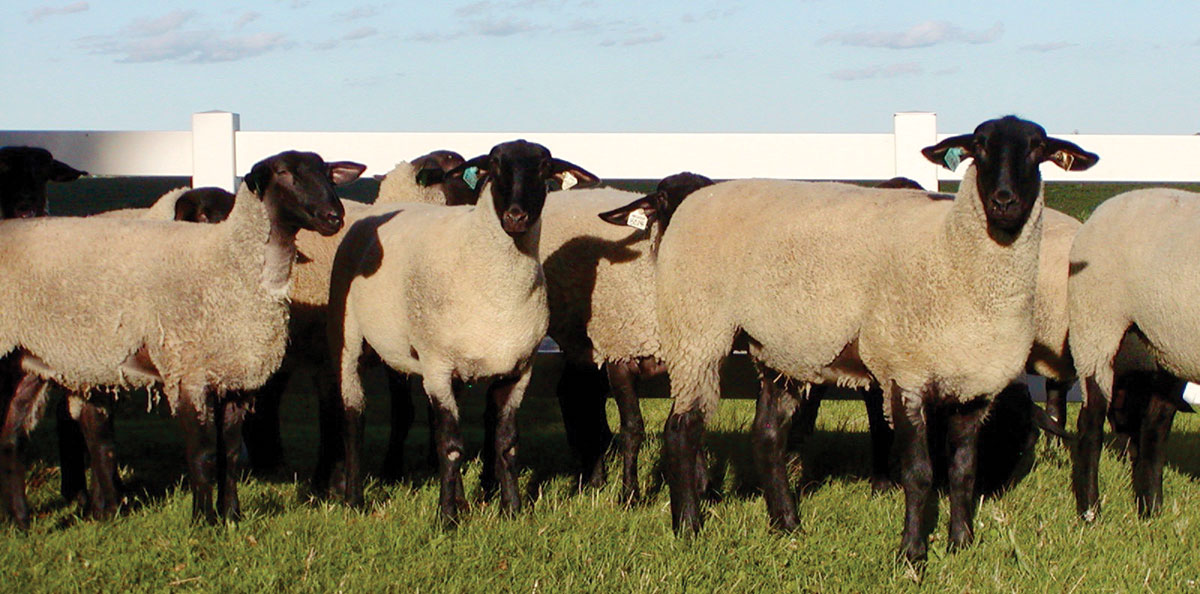
When it comes to selecting a herd sire, picking the right genetics is key, but do EPDs tell the whole story?
Brett Foster said the story of the dam is often left untold, but it’s perhaps the most important chapter in the book.
“I’ve heard horse guys talk for years that if you have a good mare, you can breed her to anything,” Brett said. “If you have a mediocre mare, it doesn’t matter what you breed her to, you are going to have a mediocre colt. I think cows are the same way; you’ve got to have a good set of foundation cows that work in your environment.”
The Bates County, Mo., cattleman strives to produce bulls with the material traits to produce better momma cows down the road.
In addition to raising his own herd sires, Brett sells about 150 Balancer and Gelbvieh bulls annually through spring and fall sales at his B/F Cattle Company east of Butler, Mo.
Brett started his cattle operation after high school in 1996.
“I knew I wasn’t college material and land prices were pretty good back then,” he said. “I just always really enjoyed working cows, feeding cows and that kind of thing. I never had a big destination for raising bulls, but it has just kind of migrated into that.”
Today, Brett, along with is wife Libby and their three young daughters, have approximately 400 head of cattle, operating on about 1,500 leased and own acres.
The path to Balancer began when his father Clifford Foster and grandfather Vince Strope began using Gelbvieh bulls in their herds.
“They had about every color bull you can have, but they both went to Gelbvieh bulls around 1990. The females out of those crosses were just phenomenally better than anything they had tried in the past. I started out with Angus cows and I started using Gelbvieh bulls; we tried other breeds, but the Gelbvieh crosses, they just excelled.”
Seeing the value in the maternal side of the Angus and Gelbvieh cross prompted Brett to purchase his first registered Angus females in 1998.
“We were crossing them up before it was the popular thing to do,” he said. “We have hit that timing just about right for marketing bulls.”
Bringing desirable maternal traits into a commercial herd through maternal herd sires is Brett’s goal.
“I really think what distinguishes me from other seedstock guys is that I really try to focus on the maternal side of things,” Brett said. “If there is a cow that I really don’t like and she has a really good bull calf, we might leave him a bull, but I will tell guys I market the bull to why I don’t like that cow. I spent too many years buying the wrong genetics because either I didn’t ask the right questions, people didn’t give the right answers, or they were just naive in what it takes to stay in business on the commercial side.”
B/F Cattle Company has a closed cowherd, with all females being a sixth or seventh generation Balancer, and a product of Brett’s breeding program.
“We don’t have a boughten registered cow on the place,” Brett said. “I have a couple of boughten bulls in our bull inventory, but I am looking forward to the day when we have no outside cattle.”
Keeping family lines separated can be difficult, but Brett feels the bulls he produces are the best for his operation. He does some AI and ET work, but females are bred with semen collected from B/F bulls, and the sire and dam of embryos can be found on the farm. All recip females are homegrown as well.
“We flushed 14 cows this fall and I bred every one of them to our own bulls,” he said. “I don’t want to sound self-righteous, but I can’t find anything else I like. I’m sure there are some out there who are doing it the way we are, but the way guys make money is turning grass into beef.”
Brett has tried incorporating other genetics through AI from some of the top breeders from the Western region of the U.S., but he was not pleased with the results.
“The things I did wrong, if I hadn’t done them I wouldn’t be where I am today,” he explained. “I cuss those Western genetics, but if I hadn’t done it and paid attention to some strict standards, I wouldn’t have cows any better than anyone else. If I had one thing I could tell every commercial cattle guy it is to find the genetics that will work for your environment, no matter what breed. The heat and humidity here, plus the entophyte in the fescue, don’t work with Western genetics. I have bought some of the best genetics in the country and they just don’t work here.”
He also found issues with daughters of AI-sired bulls not breeding back.
“My biggest pet peeve is the fertility side of things,” he said. “We’ve used enough Angus to increase our carcass merit, but from the female side, I don’t know of a single bull out there I would want to use. I try not to be closed-minded and I look through semen catalogs everywhere, but all of the big named guys feed their cattle silage, and that’s not practical because to get them bred back, you have to pour the calories to them. I want to make the commercial cow guy more profitable. I just feel like if you can get more cows bred and not give up any weaning weights, it’s more profitable.”
While Brett wants a profit from his cattle, they are not pampered. Animals are raised on fescue and the cowherd is only supplemented in the winter months if his clover and lespedeza hay, which Brett puts up himself, does not have a protein level of about 12 percent.
“I think a quality cow can do her job on 12 percent protein,” Brett said. “If you get much less than that, she almost needs some kind of supplement.”
After buying hay during some drought years, Brett noticed his cows were not holding condition and sent a sample off for analysis. The test showed only 4 percent protein.
“We were already behind the ball at that time,” he said. “We had spent a lot of money on hay and supplement, so we figured if we could get our own hay with 12, 13 percent protein, we would be better off.”
Calves are not offered creep feed because Brett believes a cow’s performance is based on how well her calf grows without additional feed. He added that fields and pastures are fertilized with chicken litter, and a rotational grazing system has been implemented.
So many breeders, Brett said, chase EPDs numbers and higher carcass scores, which has allowed the maternal side of the industry to slip away.
“The cows I like need to be easy fleshing. I don’t feel like a lot of the genetics out there today have that trait and work well on grass. I think every breed struggles with that. I don’t cull a cow based on EPDs,” he said.
While EPDs do serve a purpose, Brett said actual production often takes a backseat.
“My fourth-grader can make a cow and bull work on paper, but it doesn’t always actually work,” he said. “I have sent more than 500 AI-sired females to town; that’s a lot of cows. Those are ones we tried to make cows out of that just wouldn’t work around here; that’s a pretty expensive lesson. A lot of people just don’t get what I’m putting out there because to me the cow family means everything.”
While Brett will not cull based on EPDs, he will cull based on pelvic measurements.
“I’m really picky on that,” Brett said. “We usually check heifers as yearlings or before and if she’s below 150, I’ll cull. Most vets say to cull at 140 or below, but we just kind of raise our level up. That’s something a lot of commercial guys struggle with.”
B/F Cattle Company teams up with Cleland Cattle Company from Arma, Kan., during their bull sales, with the majority (about 100 per sale) coming from the Fosters. Brett said he feels he should have been offering just as many bulls more than a decade ago.
“We had to cull so many just from the AI problems,” Brett said. “I won’t sell a yearling bull because we do grow them slower. We sell them at about 18, 20 months of age and I feel like they can go out and cover more cows. I recommend those guys who get a 20-month-old bull to turn them out on 30 head.”
Brett hopes B/F Cattle Company may one day be selling semen to other producers, but no semen will be offered until the bulls are proven to produce a productive female.
“I don’t want to sell semen from a bull until I know his daughters are going to do well,” he said. “Most guys will take a yearling bull, collect him and start peddling semen; I’m not that guy. Back when I was doing AI, it didn’t really help me; I was naive in my thinking and thought it would, so I feel the need to know the genetics on both top and bottom for several generations.”







